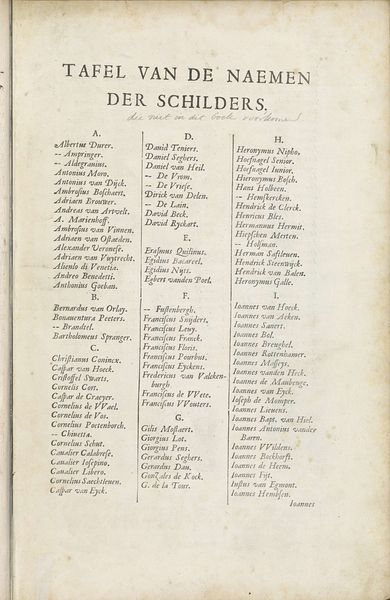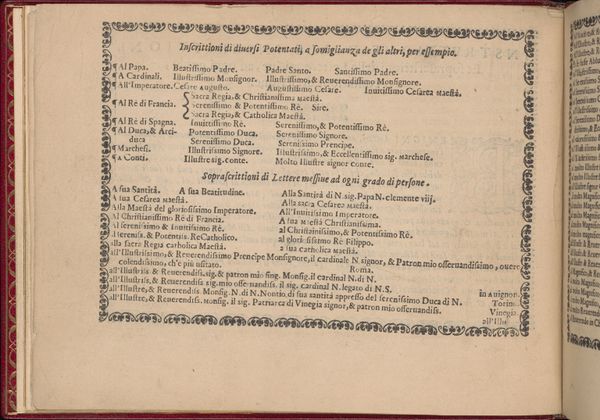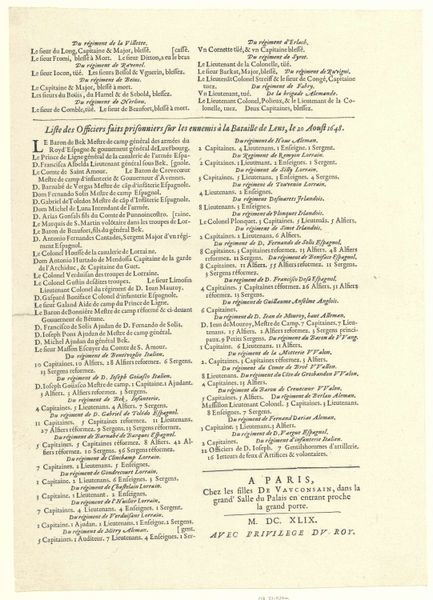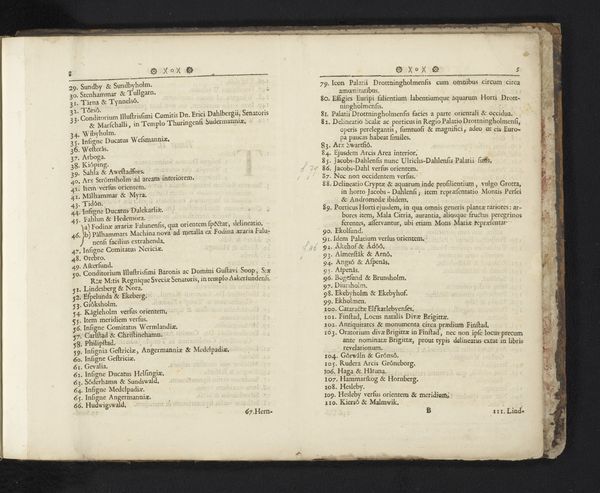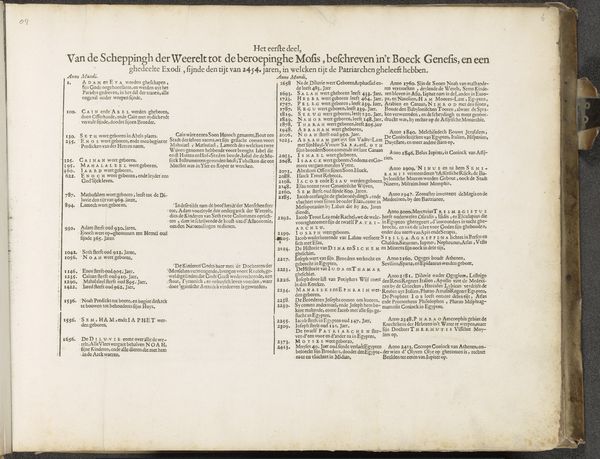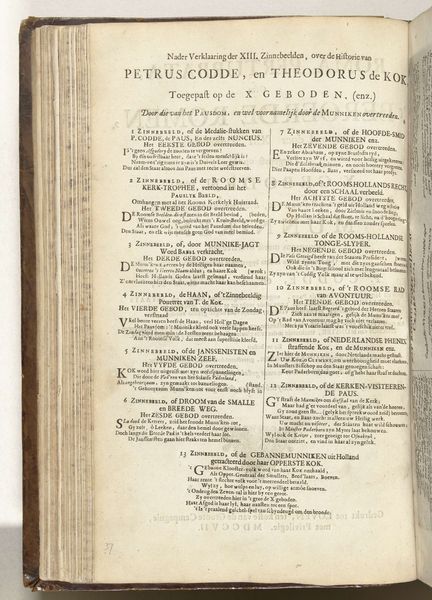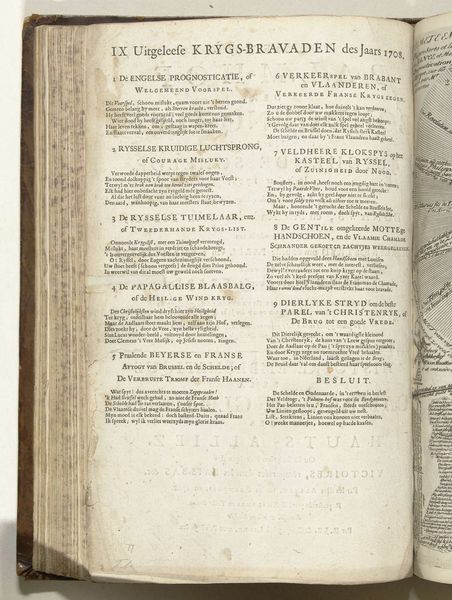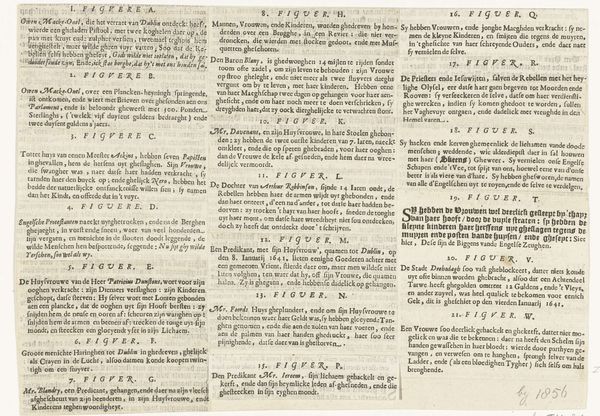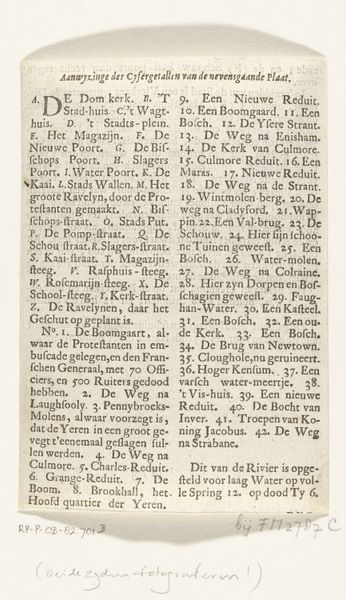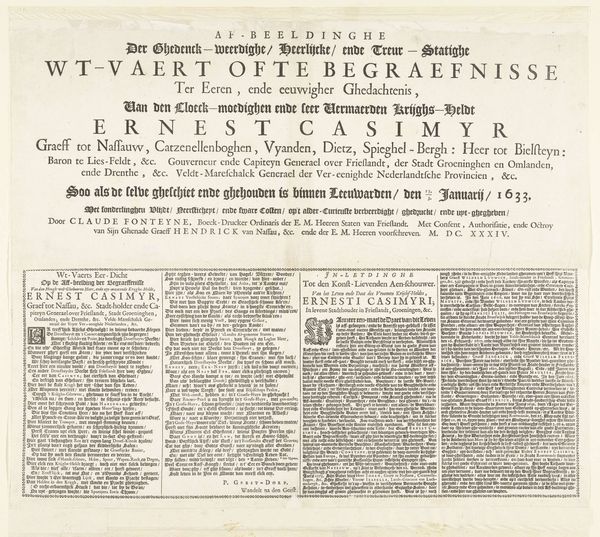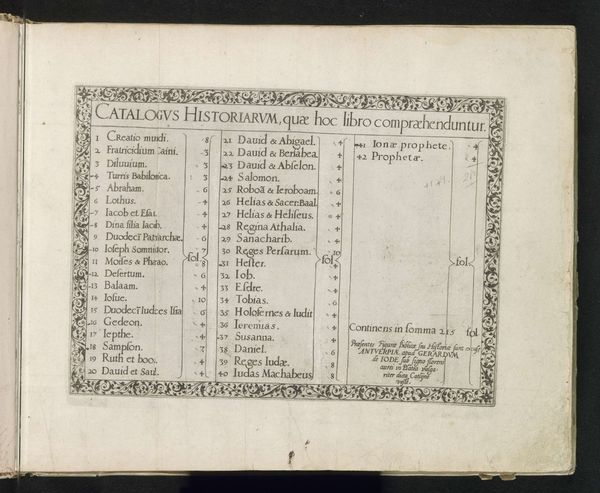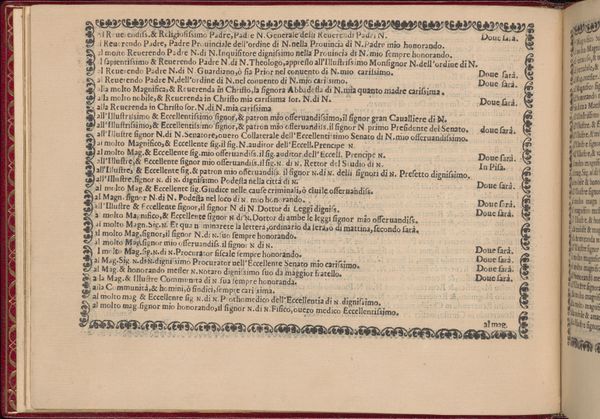
Inhoudsopgave op het prentwerk: Nicolas de Fer, Les forces de l'Europe, 1696 1696
0:00
0:00
print, paper, engraving, architecture
#
baroque
# print
#
paper
#
cityscape
#
history-painting
#
engraving
#
architecture
Dimensions: height 290 mm, width 360 mm
Copyright: Rijks Museum: Open Domain
Editor: This is "Inhoudsopgave op het prentwerk: Nicolas de Fer, Les forces de l'Europe, 1696," or, roughly, "Table of Contents to the Collection of Prints: Nicolas de Fer, The Forces of Europe, 1696." It’s an engraving on paper. My first thought is it looks like a book of war plans. But what story does it tell about the world at that time? Curator: It tells of a Europe obsessed with fortification and control, rendered through the meticulous detail of cartography. Consider that this isn’t just about military strategy; it’s about the public image of power. The 'Forces of Europe' isn't merely a collection of maps but a demonstration of Louis XIV’s, and France’s, strength broadcast across the continent through meticulously crafted and widely distributed imagery. What is the impact of democratizing information? Editor: Democratizing? But it seems restricted to leaders. Is that right? Curator: Think about how cities, defenses, and strategies, once closely guarded secrets, are here made public, influencing perceptions and even inciting ambition in rival states. The 'Table of Figures' becomes a tool of propaganda and a form of competitive intelligence available – theoretically – to a broader audience. In what way do printed documents influence decisions and incite fear? Editor: That makes me think about how powerful the printing press really was. Distributing this knowledge, even in a limited way, would shift the balance of power. Curator: Precisely! And, who gets to interpret and control this information matters greatly. This index isn't just informative; it's a political act, shaping the narrative of a continent bracing for constant war and attempts to assert military dominance. Editor: I didn’t think about it being a form of "soft" power. Thanks. I will explore this aspect more. Curator: It underscores how art serves not just aesthetic or documentary functions, but also plays a key role in shaping public discourse and political will. We must critically examine the contexts that bring about creation, viewership, and collecting!
Comments
No comments
Be the first to comment and join the conversation on the ultimate creative platform.
